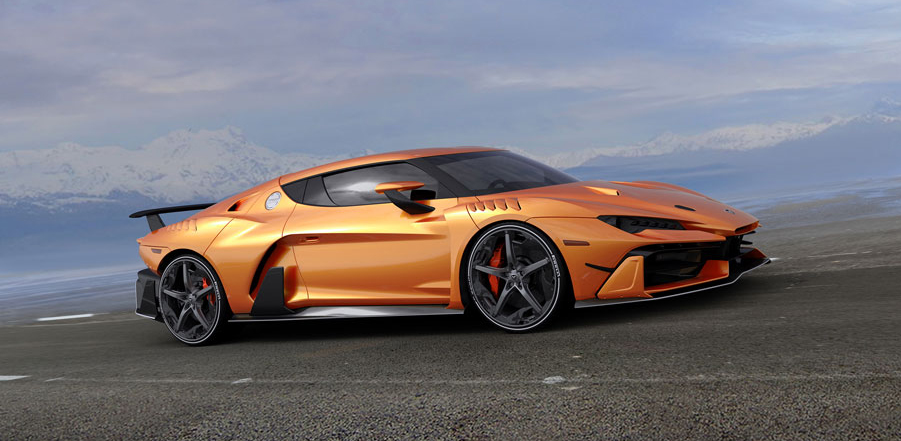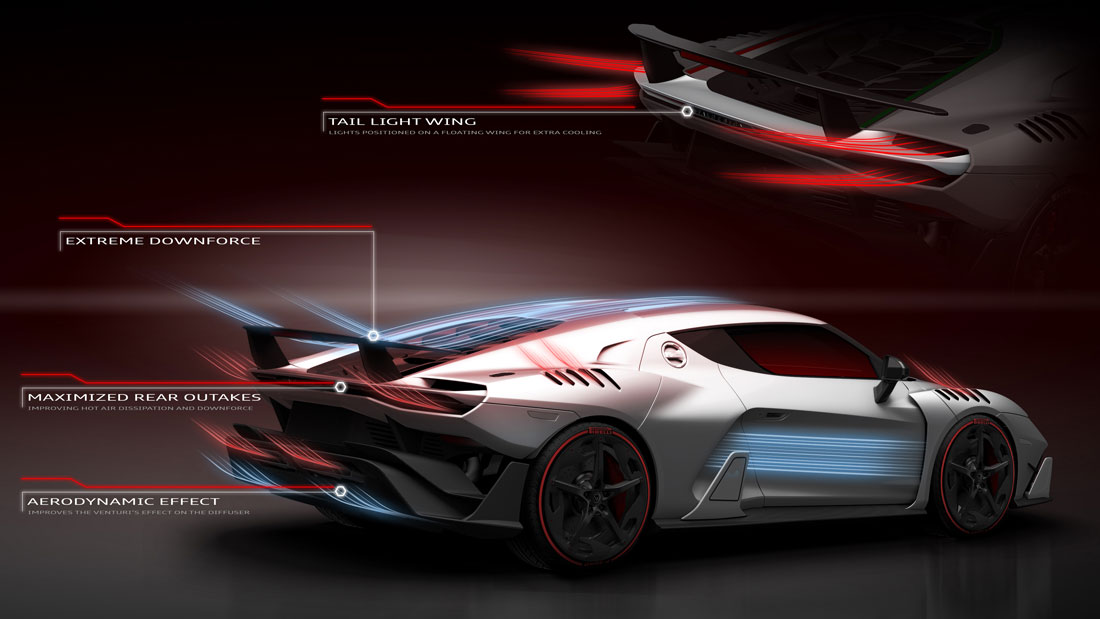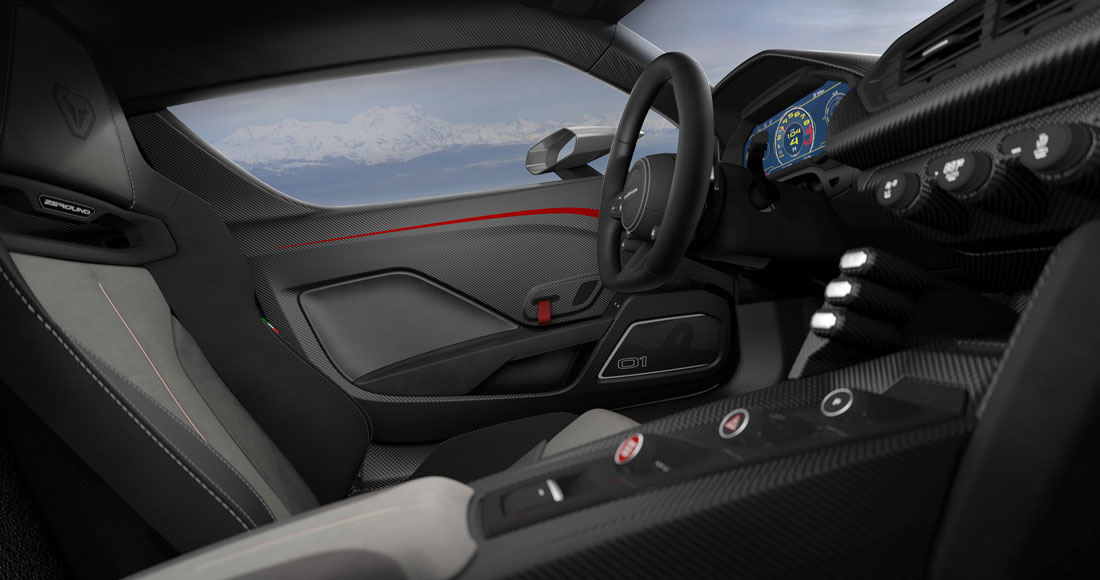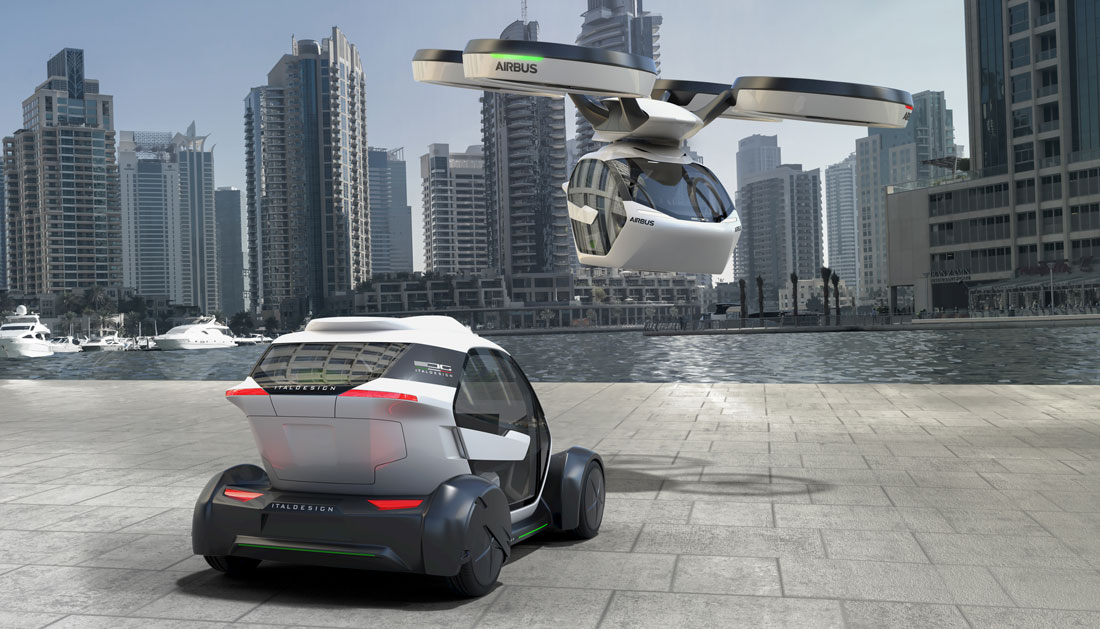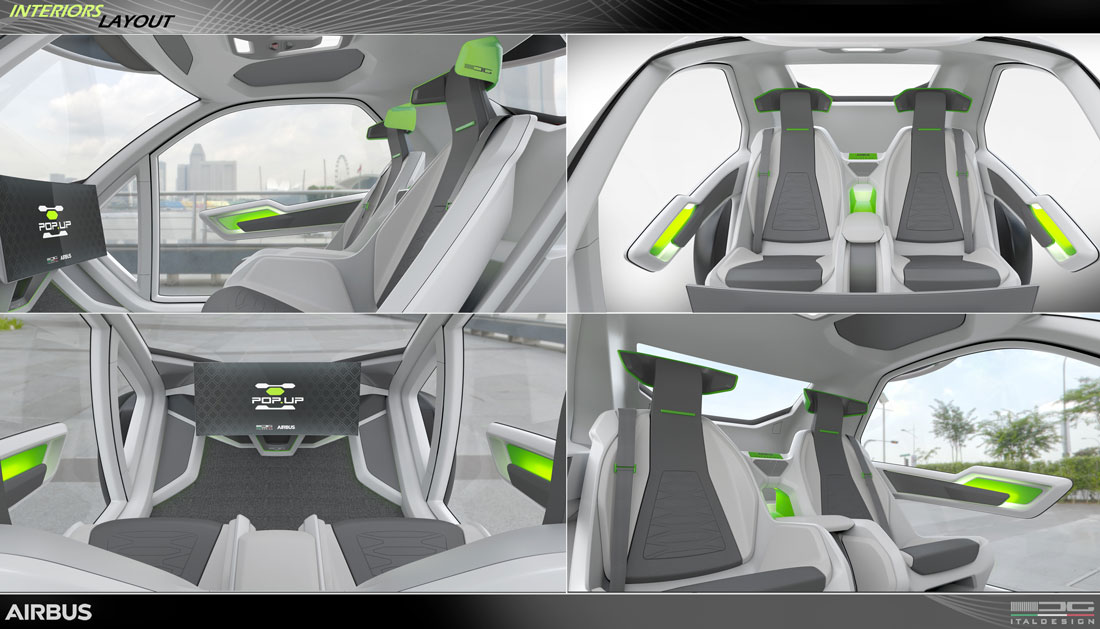“Lightweight”. This was the starting concept that designers and engineers of Italdesign implemented for the “ZeroUno” project, presented at the 87th International Auto Show of Geneva.
Designers and engineers work simultaneously to carry forward styling solutions and functional-feasibility checks until an ideal compromise is achieved that meets design and performance requirements alike. Limiting the final weight of the car as far as possible in order to ensure exceptional performances by equally emphasising the carbon fibre and aluminium chassis and the powerful V10 5.2 naturally aspired engine was the objective defined right from the start of this project.
“The exterior is characterised by the two sides of the same coin,” – said Filippo Perini, Head of Innovation Design at Italdesign: “Above the tornado line, surfaces are distinctly softer and smoother in keeping with the Italian Gran Turismo tradition. The lower part is modelled by aerodynamics. To achieve the performances we had in mind, we had to dare to go beyond all limits in styling and even from a purely technical points of view. The outcome ensures an extremely high impact without ever being design for design’s sake”.
The setting at the front is inspired by the ultimate top-performance cars: single-seater racing cars. The characteristic feature of the nose is the six-sided polygon first seen in the GTZero concept-car in 2016 which will also be referenced again in future projects. Together with the two side air intakes, it ensures the optimum flow of intake air.
The interior of the car is simultaneously essential, light and elegant, in keeping with the exterior: carbon fibre dominates the overall styling. Door panels, dashboard and central tunnel are all made exclusively with this material. The digital cockpit houses all the car’s main controls. Three small monitors in the middle of the dashboard, on the other hand, control all air conditioning functions.
The second project unveiled on the stand by Italdesign has been developed with Airbus. Pop.Up is the first modular, fully electric, zero emission concept vehicle system designed to relieve traffic congestion in crowded megacities. Pop.Up envisages a modular system for multi-modal transportation that makes full use of both ground and airspace.
The feasible concept is the result of Italdesign and Airbus’ joint reflection on how to address the mobility challenges of megacities achievable for a majority, which has become one of the most pressing issues for commuters in megacities worldwide. With traffic congestion projected to hugely increase by 2030, the companies decided to combine their engineering expertise to tackle how to best achieve a sustainable, modular and multimodal urban mobility system – giving rise to the Pop.Up concept.
Pop.Up System consists of a three layers concept:
– an Artificial Intelligence platform that, based on its user knowledge, manages the travel complexity offering alternative usage scenarios and assuring a seamless travel experience;
– a vehicle shaped as a passenger capsule designed to be coupled with two different and independent electric propelled modules (the ground module and the air module). Other public means of transportation (e.g. trains or hyperloops) could also integrate the Pop.Up capsule;
– an interface module that dialogues with users in a fully virtual environment;
The Pop.Up system aims to give time back to commuters through a flexible, shared and adaptable new way of moving within cities introducing a new user-focused transportation system concept.
The Pop.Up vehicle combines the flexibility of a small two seater ground vehicle with the freedom and speed of a vertical take-off and landing (VTOL) air vehicle, thus bridging the automotive and aerospace domains. Pop.Up’s modus operandi is simple: passengers plan their journey and book their trip via an easy-to-use app. The system automatically suggests the best transport solution – according to user knowledge, timing, traffic congestion, costs, ridesharing demands – joining either the air or ground module or other means of transportation to the passenger capsule, and following passengers’ preferences and needs.
#GIMS2017 #GimsSuiss

